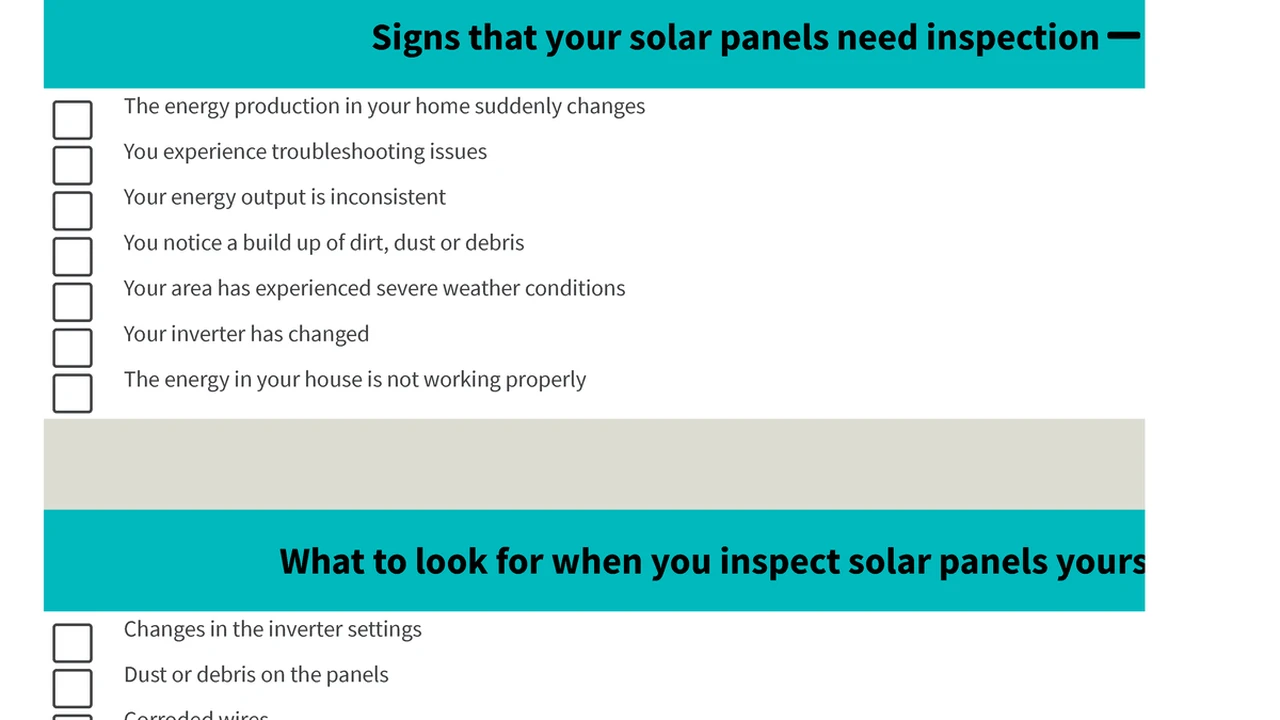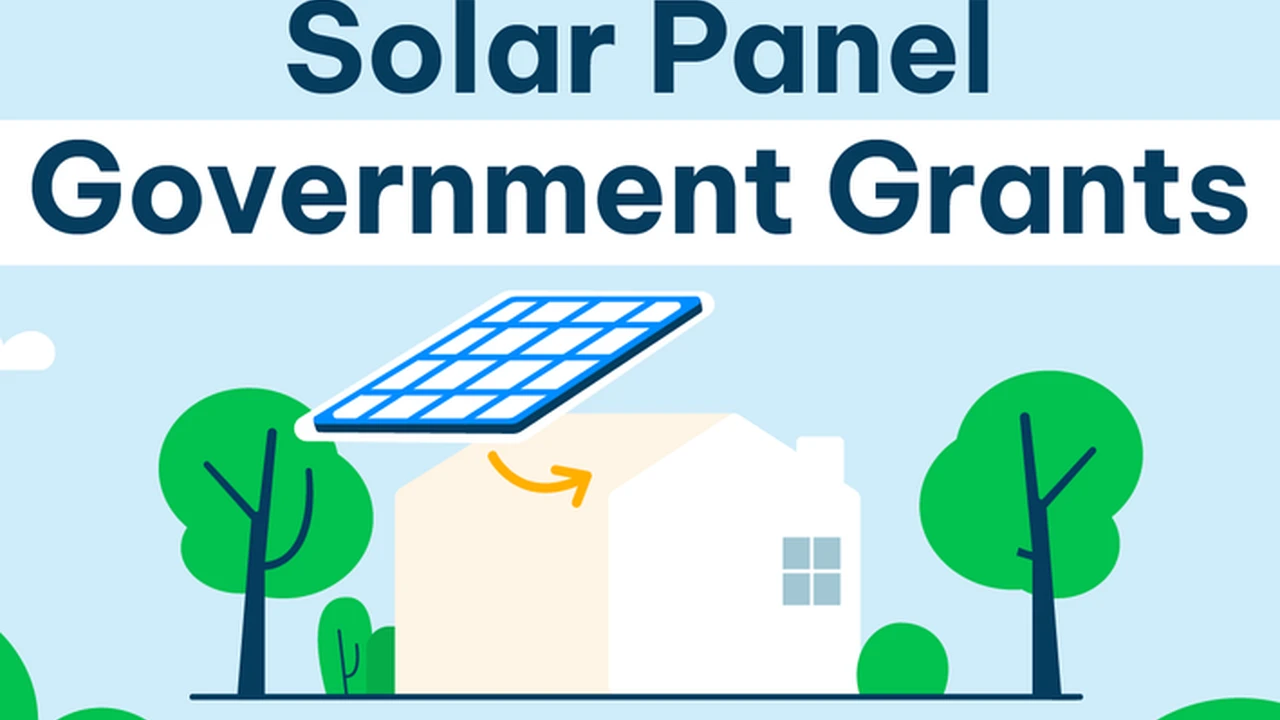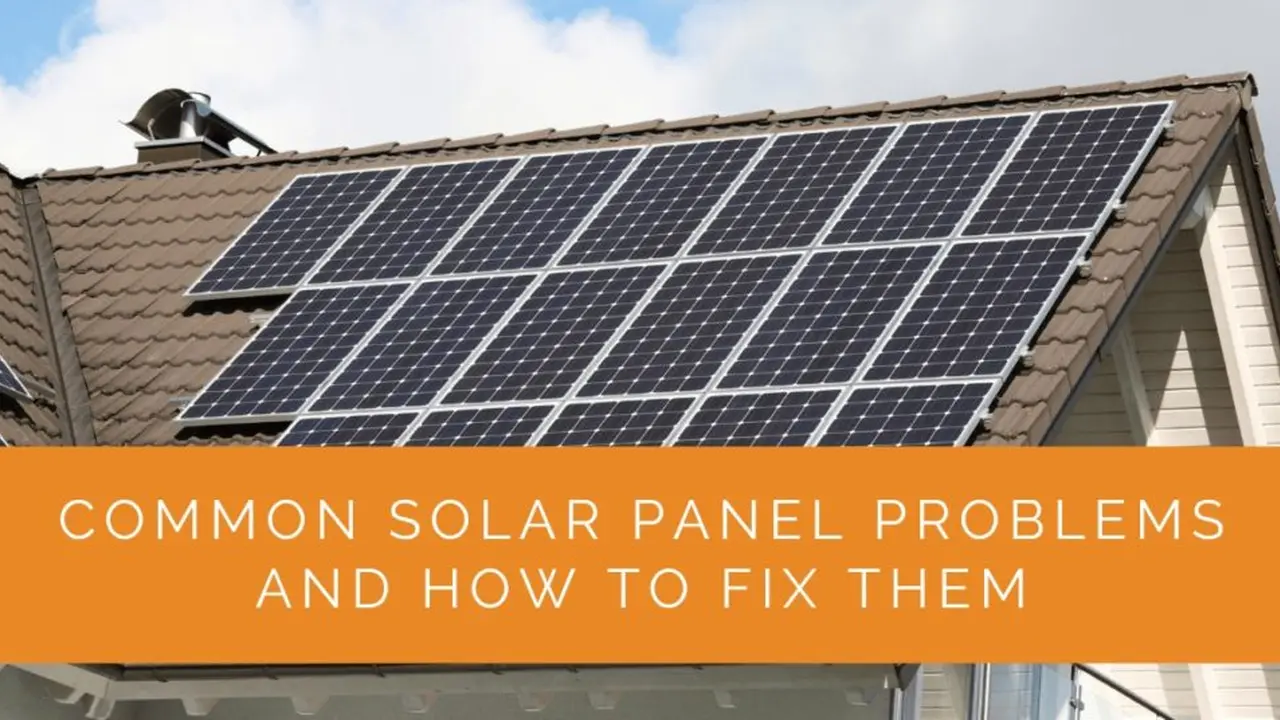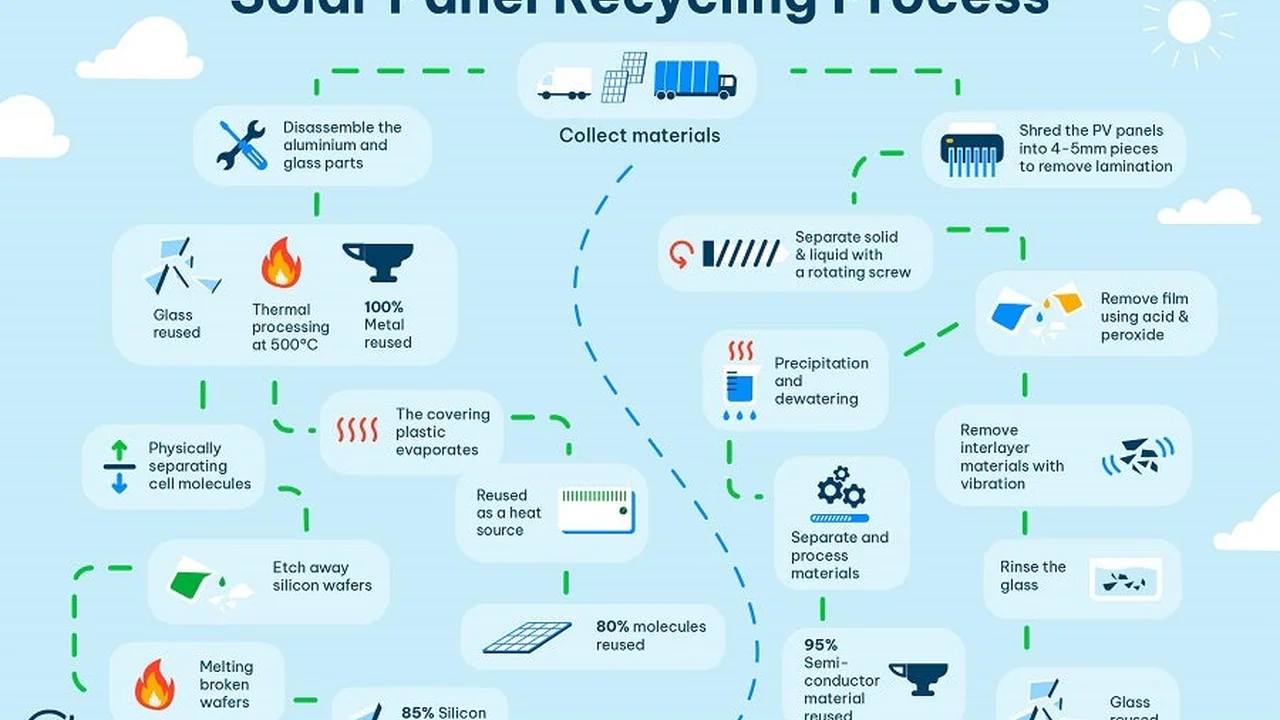Solar Panel Inverters: Converting DC to AC Power
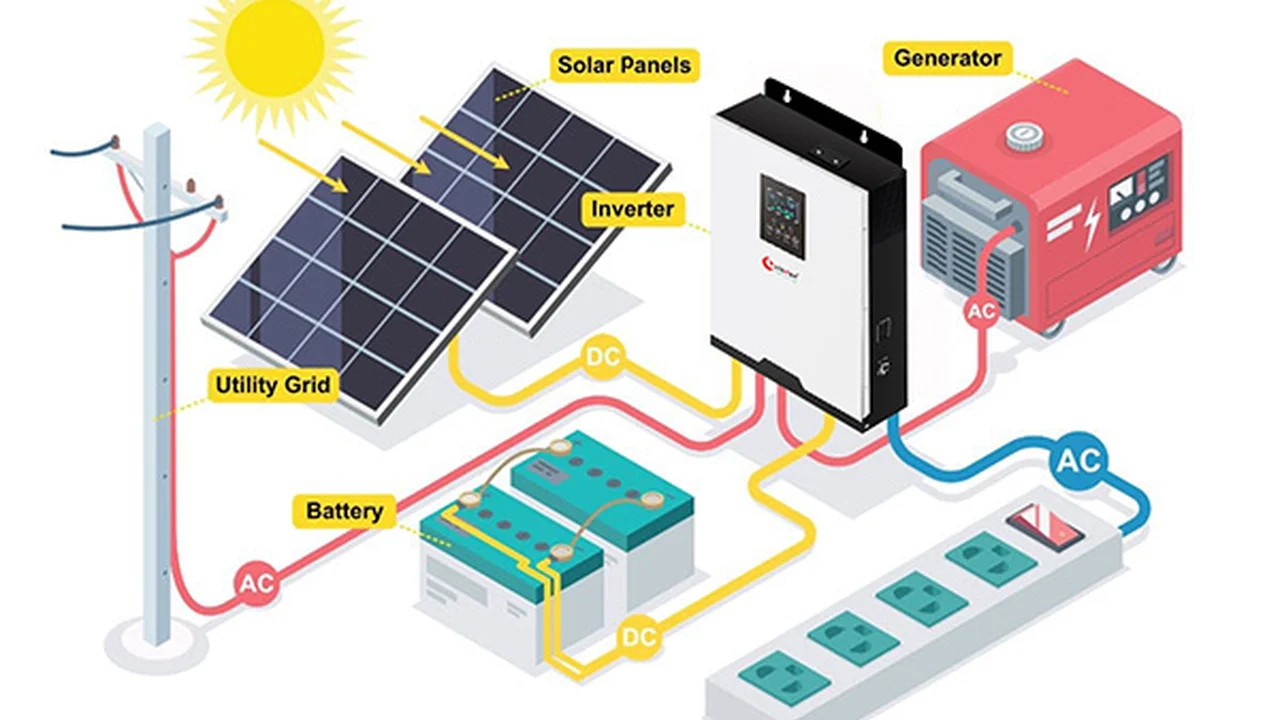
Understanding Solar Panel Inverters DC to AC Conversion Basics
Alright, let's dive into the heart of a solar panel system – the inverter! You've got those shiny solar panels up on your roof, soaking up the sun and generating electricity. But here's the thing: that electricity is in the form of Direct Current (DC). Your home, and pretty much the entire electrical grid, runs on Alternating Current (AC). So, how do we get from DC to AC? That's where the inverter comes in. Think of it as the translator, the middleman, the essential piece of kit that makes solar power usable.
Simply put, a solar panel inverter takes the DC electricity produced by your solar panels and converts it into AC electricity that you can use to power your appliances, lights, and everything else in your home. It's a crucial process, and without an inverter, your solar panels would be pretty useless. It's like having a bunch of gasoline but no engine to burn it in.
But it's not just about conversion. Inverters also perform other important functions, like monitoring the performance of your solar panels, maximizing energy production, and even shutting down the system in case of a fault. They're the brains of the operation, ensuring everything runs smoothly and safely.
Types of Solar Panel Inverters Choosing the Right Inverter for Your Needs
Now, not all inverters are created equal. There are several different types, each with its own strengths and weaknesses. Choosing the right one for your specific needs is crucial for maximizing the efficiency and longevity of your solar panel system. Let's break down the main types:
String Inverters The Workhorse of Solar Power
String inverters are the most common and generally the most cost-effective type. They connect multiple solar panels in a "string," and the inverter converts the DC electricity from the entire string into AC electricity. They're a good option for systems where all the solar panels are facing the same direction and receive similar amounts of sunlight. Think of it like a team working together. If one member is slacking, the whole team suffers.
Pros: Affordable, well-established technology, relatively simple to install.
Cons: Performance can be affected if one panel in the string is shaded or malfunctioning, limited monitoring capabilities.
Microinverters Panel-Level Power Conversion
Microinverters are small inverters that are installed directly on each individual solar panel. This means that each panel operates independently, maximizing energy production and allowing for individual panel monitoring. This is like giving each team member their own dedicated coach to help them perform at their best.
Pros: Maximize energy production, individual panel monitoring, more resilient to shading and panel mismatch.
Cons: More expensive than string inverters, can be more complex to install.
Power Optimizers Enhancing String Inverter Performance
Power optimizers are similar to microinverters in that they are installed on each individual solar panel. However, instead of converting DC to AC electricity at the panel level, they optimize the DC electricity before sending it to a central string inverter. This allows for individual panel monitoring and increased energy production, while still maintaining the cost-effectiveness of a string inverter system.
Pros: Increased energy production compared to string inverters, individual panel monitoring, more resilient to shading and panel mismatch, more cost-effective than microinverters.
Cons: Still requires a string inverter, slightly more expensive than a standard string inverter system.
Hybrid Inverters Battery Ready for Energy Storage
Hybrid inverters are designed to work with battery storage systems. They can convert DC electricity from solar panels into AC electricity for immediate use, charge batteries for later use, and even provide backup power during a grid outage. These are becoming increasingly popular as people look to achieve energy independence and reduce their reliance on the grid. It's like having your own personal power plant!
Pros: Integration with battery storage, backup power capabilities, increased energy independence.
Cons: More expensive than other types of inverters, requires a battery storage system.
Key Features to Consider When Choosing a Solar Inverter Optimizing Efficiency and Reliability
Okay, so you know the different types of inverters. Now, what features should you be looking for? Here are some key considerations:
- Efficiency: This is the percentage of DC electricity that the inverter converts into AC electricity. A higher efficiency rating means you'll get more usable power from your solar panels. Look for inverters with an efficiency rating of 95% or higher.
- Reliability: Solar inverters are exposed to the elements, so it's important to choose one that is built to last. Look for inverters with a long warranty (10 years or more) and a proven track record of reliability.
- Monitoring Capabilities: The ability to monitor the performance of your solar panel system is crucial for identifying any problems and maximizing energy production. Look for inverters with built-in monitoring capabilities or that are compatible with external monitoring systems.
- Safety Features: Safety is paramount. Make sure the inverter has built-in safety features like arc fault protection and rapid shutdown capabilities.
- Grid Compatibility: The inverter must be compatible with your local grid. This means it must meet the grid's voltage and frequency requirements and have the necessary certifications.
Product Recommendations and Comparisons Finding the Best Inverter for Your Budget and Needs
Let's get down to brass tacks. Here are a few specific inverter models that are worth considering, along with their key features, pros and cons, and estimated prices (remember prices can fluctuate!):
Enphase IQ8 Series Microinverters The Gold Standard in Panel-Level Conversion
Description: Enphase is a leader in microinverter technology, and the IQ8 series is their latest and greatest. These microinverters are known for their high efficiency, reliability, and advanced monitoring capabilities. They even have the ability to form a microgrid during a power outage without batteries (with the right system configuration).
Use Cases: Ideal for residential systems where shading is a concern, or for homeowners who want maximum energy production and individual panel monitoring.
Pros: High efficiency, individual panel monitoring, resilient to shading, long warranty, microgrid capability.
Cons: More expensive than string inverters.
Estimated Price: $200 - $250 per microinverter (plus installation).
SolarEdge HD-Wave Inverter with Power Optimizers Maximizing String Inverter Performance
Description: SolarEdge combines the cost-effectiveness of a string inverter with the performance benefits of power optimizers. Their HD-Wave inverter is known for its high efficiency and reliability, and the power optimizers allow for individual panel monitoring and increased energy production.
Use Cases: A good option for residential and commercial systems where shading is a concern, or for those who want to maximize energy production without the cost of microinverters.
Pros: Increased energy production, individual panel monitoring, more cost-effective than microinverters, long warranty.
Cons: Requires power optimizers, slightly more expensive than a standard string inverter system.
Estimated Price: $1,500 - $2,500 for the inverter (plus the cost of power optimizers, which are typically $50 - $80 each).
SMA Sunny Boy String Inverter A Reliable and Affordable Option
Description: SMA is a German manufacturer with a long history of producing high-quality string inverters. The Sunny Boy series is known for its reliability, efficiency, and ease of installation. This is a solid, dependable choice.
Use Cases: Ideal for residential and commercial systems where shading is not a significant concern and cost is a primary factor.
Pros: Affordable, reliable, easy to install.
Cons: Limited monitoring capabilities, performance can be affected by shading.
Estimated Price: $1,000 - $2,000.
Fronius Primo String Inverter A Feature-Rich String Inverter
Description: Fronius is another well-respected European manufacturer known for its innovative string inverters. The Primo series offers a range of features, including integrated Wi-Fi monitoring and support for smart home integration.
Use Cases: Suitable for residential and small commercial systems where advanced monitoring and smart home integration are desired.
Pros: Feature-rich, integrated Wi-Fi monitoring, supports smart home integration, reliable.
Cons: Can be slightly more expensive than some other string inverter options.
Estimated Price: $1,200 - $2,200.
Delta Electronics Inverters High-Efficiency and Robust
Description: Delta Electronics is a global leader in power electronics, offering a range of high-efficiency inverters. Their inverters are known for their robust design and suitability for various applications, from residential to large-scale commercial installations.
Use Cases: Appropriate for residential, commercial, and industrial projects where high efficiency and durability are essential.
Pros: High efficiency, robust design, wide range of models, suitable for various applications.
Cons: May not be as widely known as some other brands in the residential market.
Estimated Price: Varies significantly based on model and application; consult with a local dealer for pricing.
Inverter Installation and Maintenance Ensuring Optimal Performance and Longevity
So, you've chosen your inverter. Now what? Proper installation and maintenance are crucial for ensuring optimal performance and longevity. Here are a few key things to keep in mind:
- Professional Installation: Always hire a qualified and licensed solar installer to install your inverter. This will ensure that it is installed correctly and safely.
- Proper Ventilation: Inverters generate heat, so it's important to ensure they have adequate ventilation. Install them in a cool, dry place, away from direct sunlight.
- Regular Inspections: Inspect your inverter regularly for any signs of damage or wear. Check the wiring, connections, and cooling fins.
- Keep it Clean: Dust and debris can accumulate on the inverter, reducing its efficiency. Clean it regularly with a soft cloth.
- Monitor Performance: Keep an eye on the inverter's performance through its monitoring system. If you notice any unusual readings or error messages, contact your installer or a qualified technician.
Understanding Inverter Warranties Protecting Your Investment
Pay close attention to the inverter's warranty! This protects you in case of failures. Here's what to look for:
- Length of Warranty: Most inverters come with a standard warranty of 5-10 years. Some manufacturers offer extended warranties up to 20 or 25 years.
- Coverage: Make sure the warranty covers all major components of the inverter, including the electronics, cooling system, and enclosure.
- Terms and Conditions: Read the fine print carefully to understand the terms and conditions of the warranty. Pay attention to any exclusions or limitations.
- Manufacturer Reputation: Choose an inverter from a reputable manufacturer with a proven track record of honoring their warranties.
The Future of Solar Inverters Advancements and Innovations
The world of solar inverters is constantly evolving. Here's a peek at what the future holds:
- Increased Efficiency: Manufacturers are constantly working to improve the efficiency of inverters, reducing energy losses and maximizing power output.
- Smart Inverters: Future inverters will be even smarter, with advanced monitoring, control, and communication capabilities. They will be able to integrate seamlessly with smart homes and the grid.
- Grid Services: Inverters will play an increasingly important role in supporting the grid, providing services like voltage regulation and frequency response.
- Energy Storage Integration: Inverters will be even more tightly integrated with energy storage systems, making it easier to store and use solar energy.
Solar Inverter Costs and ROI Making the Right Investment
Let's talk money! The cost of a solar inverter can vary depending on the type, size, and features. However, it's important to remember that the inverter is a critical component of your solar panel system, and investing in a high-quality inverter can pay off in the long run.
Here's a quick breakdown of the factors that affect inverter cost:
- Type of Inverter: Microinverters and hybrid inverters are generally more expensive than string inverters.
- Size of Inverter: Larger inverters (for larger solar panel systems) will cost more than smaller inverters.
- Features: Inverters with advanced monitoring, safety, and communication features will typically cost more.
- Brand: Some brands are known for their high quality and reliability, and their inverters may command a premium price.
The return on investment (ROI) for a solar inverter depends on several factors, including the cost of the inverter, the amount of energy your solar panel system produces, and the cost of electricity in your area. However, in general, a high-quality solar inverter can pay for itself over its lifespan through increased energy production and reduced electricity bills.
Troubleshooting Common Solar Inverter Problems Diagnosing and Resolving Issues
Even the best inverters can sometimes experience problems. Here are a few common issues and how to troubleshoot them:
- Inverter Not Producing Power: Check the inverter's display for error messages. Make sure the solar panels are clean and free of debris. Check the circuit breaker. If the problem persists, contact your installer.
- Low Power Output: Check for shading on the solar panels. Make sure the inverter is properly configured. Check the wiring and connections. If the problem persists, contact your installer.
- Error Messages: Refer to the inverter's manual for a list of error messages and their meanings. Follow the troubleshooting steps provided in the manual. If you are unable to resolve the problem, contact your installer.
- Overheating: Make sure the inverter has adequate ventilation. Clean the cooling fins. If the problem persists, contact your installer.
Remember, if you're not comfortable troubleshooting inverter problems yourself, it's always best to contact a qualified technician.
:max_bytes(150000):strip_icc()/277019-baked-pork-chops-with-cream-of-mushroom-soup-DDMFS-beauty-4x3-BG-7505-5762b731cf30447d9cbbbbbf387beafa.jpg)



